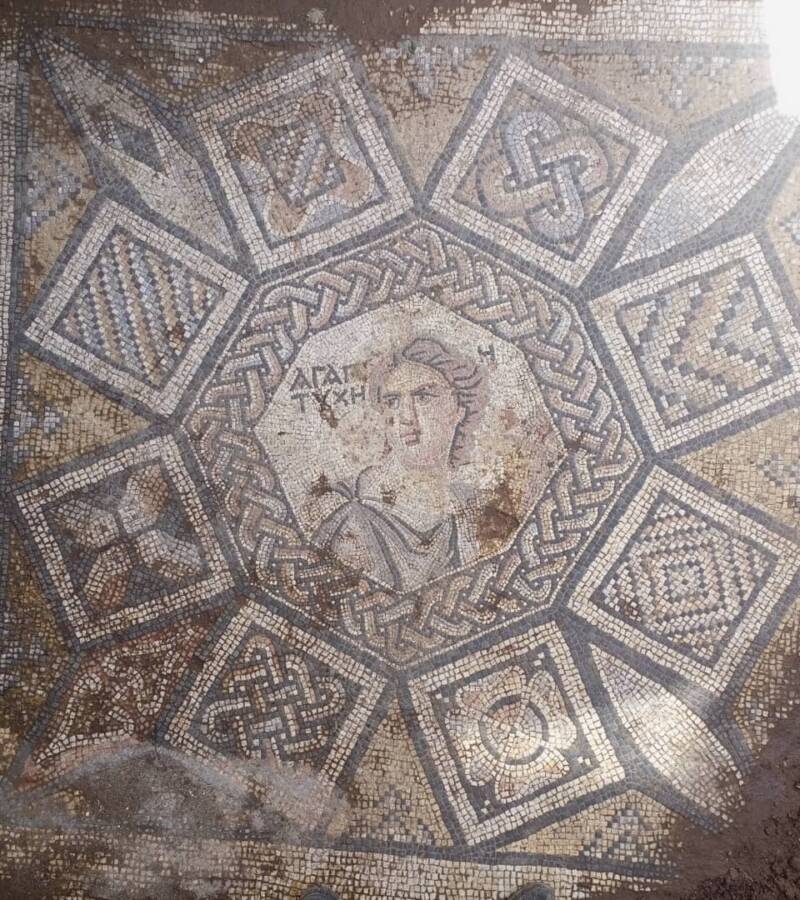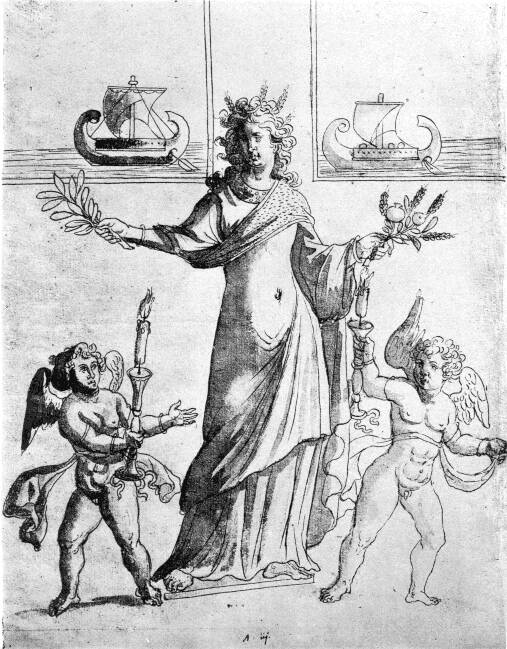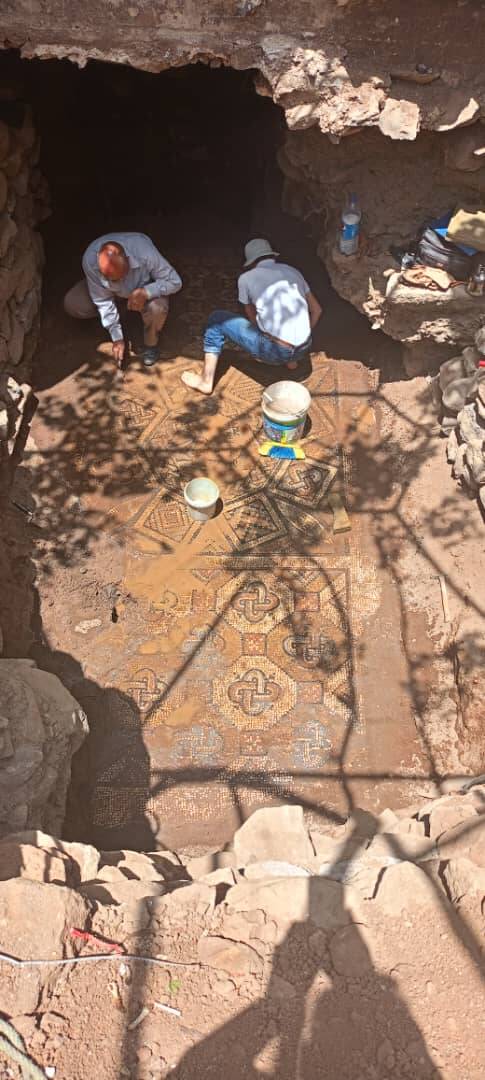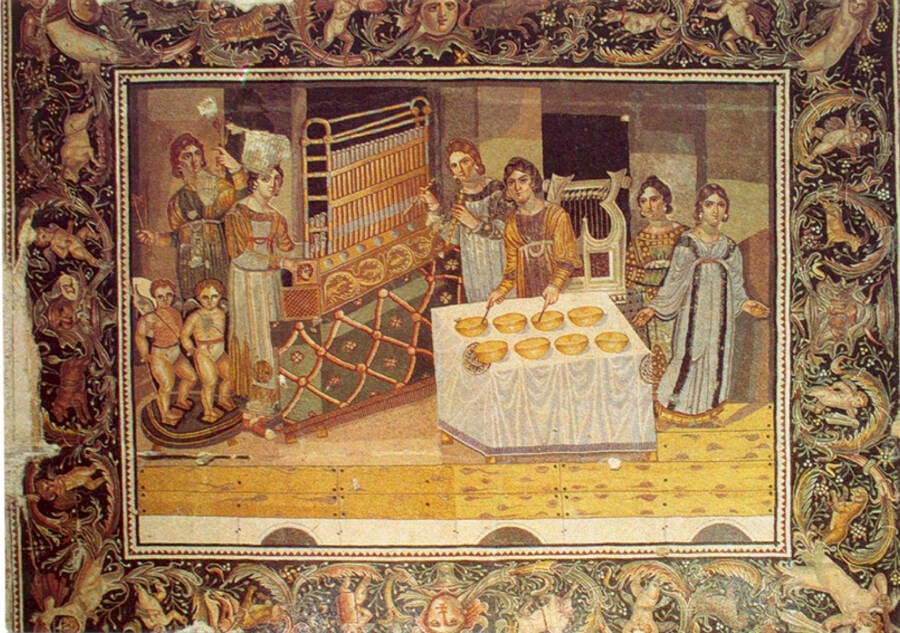Found eight feet below ground in the town of Maryamin, this fully intact mosaic dates to the Roman era and measures six feet tall and 14 feet across.

DGAM Syria/FacebookThe mosaic of the goddess Tyche unearthed in western Syria.
In the village of Maryamin, Syria, excavation for a well was recently underway when a lucky discovery turned up. As the hole reached a depth of about eight feet, a large patch of decorated and colorful stone suddenly emerged.
When experts from the Department of Archaeology fully excavated the site, they unearthed a sprawling mosaic dating back to the Roman era. The mosaic depicts a scene of the Greek goddess of fortune, Tyche, along with a Greek inscription reading “good fortune.”
This is just the latest discovery from Maryamin, where several other ancient mosaics have been unearthed in the past. The most famous of these, the Byzantine-age “Mosaic of the Musicians,” is currently on display at the Archaeological Museum of Hama.
Mosaic Depicting The Greco-Roman Goddess Of Fortune Unearthed In Syria

Wikimedia CommonsA drawing of Tyche, goddess of luck and fortune, from the 4th century C.E.
The recently-unearthed mosaic measures roughly 14 feet across and six feet from top to bottom. At the center is a depiction of Tyche, the Greek goddess of luck and fortune, surrounded by eight braid-shaped frames. On either side of the goddess are geometric decorative motifs characteristic of the Roman period.
Syrian archaeologists announced the discovery via a post on Facebook.
The goddess Tyche — known as Fortuna to the Romans — was the personification of fortune, chance, and destiny. Her influence grew particularly during the Hellenistic period (from the death of Alexander the Great in 323 B.C.E. to the death of Cleopatra in 30 B.C.E.), a time of great uncertainty and upheaval, where it seemed as if a person’s fate could shift dramatically from one moment to the next. Tyche was seen as a figure who could bestow either fabulous wealth or utter ruin, with no predictability.

DGAM Syria/FacebookArchaeologists excavating the Tyche mosaic in Maryamin, Syria.
Artistic depictions of Tyche often showed her with attributes symbolic of her power and fickle nature. She was frequently depicted holding a cornucopia, the horn of plenty, overflowing with fruits and grains, representing the abundant gifts she could bestow. Another common symbol associated with the goddess was a ship’s rudder, signifying her ability to steer the course of fate.
Often, Tyche would be portrayed wearing a mural crown, a headdress shaped like the walls of a city. The crown was meant to represent Tyche’s status as the protector of a specific city.
Furthermore, this newly-unearthed mosaic is reminiscent of others previously discovered in the village of Maryamin.
Maryamin’s Other Ancient Work Of Art: The “Mosaic Of The Musicians”
The Tyche mosaic is not the first of its kind to be found in this small Syrian village.
One of the most notable archaeological discoveries in the region came in 1960, when researchers unearthed a fourth-century Byzantine-era mosaic in the ruins of a villa in Maryamin. The 65-square-foot mosaic, known as the “Mosaic of the Musicians,” depicts six female musicians playing instruments.

Wikimedia CommonsMaryamin’s famous “Mosaic of the Musicians.”
It is one of the few examples showing an organ player in antiquity, but it also features depictions of women playing forked cymbals, a double aulos, a percussion instrument called an oxyvaphi, a type of lyre known as a kithara, and cymbals.
This mosaic is currently on display at the Archaeological Museum of Hama.
These discoveries are of particular note considering just how small the village of Maryamin has always been. Today, the population sits at around 4,000 people, but for much of ancient history, the population floated between just 20 and 50 households at different points in time.
When the “Mosaic of the Musicians” was discovered in 1960, the village had a population of just 600 people. Still, the region clearly has a rich history that harkens back to the time of the Roman Empire and before.
After reading about this mosaic unearthed in Syria, learn all about the ancient gods of the Greek pantheon. Then, learn about some of the most terrifying deities from mythology around the world.





